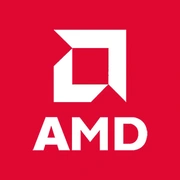AMD E1-1500

AMD E1-1500: Review of an Outdated APU for Undemanding Tasks
Introduction
The AMD E1-1500 processor, released in 2012, was positioned as a budget solution for compact PCs and multimedia devices. Thirteen years later, its relevance is questioned, but it may still find use in niche scenarios in 2025. Let's take a look at its features, compatibility, and potential in today’s landscape.
Key Specifications
Architecture and Process Technology
The E1-1500 APU (Accelerated Processing Unit) belongs to the Zacate platform, built on the Bobcat microarchitecture. It features a 40nm chip with two cores operating at a frequency of 1.48 GHz (without Turbo Boost). The integrated graphics is the Radeon HD 7310 with 80 stream processors and a clock speed of up to 500 MHz.
Key Features:
- Integration of CPU and GPU on a single die — a rare occurrence for budget solutions of the 2010s.
- Low power consumption (TDP of 18W) — suitable for passive cooling.
- Support for AMD PowerNow! technologies for energy efficiency.
Performance:
- Geekbench 6: 109 (Single-Core), 191 (Multi-Core). For comparison, a modern budget Intel N100 scores about ~800/2200 points.
- The integrated graphics can handle 1080p video, but 2020s games (even titles like Minecraft) run at minimum settings with 10-15 FPS.
Compatible Motherboards
Socket and Chipsets
The E1-1500 uses the BGA-413 — a non-removable socket, meaning the processor is soldered onto the motherboard. This limits upgrades and repairs.
Popular Platforms:
- A50M Chipset (Hudson-M1) — basic support for USB 2.0, SATA II, PCIe 2.0.
- Ready-made solutions: mini-PCs (e.g., HP t610) and thin clients.
Choosing Considerations:
- No new motherboards for the E1-1500 are manufactured. As of 2025, only used or refurbished devices are available.
- Look for compact Mini-ITX boards with the processor already soldered.
Supported Memory Types
The E1-1500 works with single-channel DDR3L-1066 MHz.
- Maximum Capacity: 8 GB (4 GB recommended for stability).
- DDR4/DDR5 not supported — this is the main limitation for upgrades.
Tip: Use two 2 GB sticks to activate pseudo-dual-channel mode (improves graphics performance by 10-15%).
Power Supply Recommendations
With a TDP of 18 W, a system based on the E1-1500 consumes approximately 40-60 W (accounting for storage and memory).
- Power Supply: Models rated at 150-200 W are sufficient (e.g., FSP Flex ATX 200W).
- Ready-made mini-PCs often use external adapters rated at 65-90 W.
Important: Don't skimp on the PSU for older systems — poor-quality units can damage components.
Pros and Cons of AMD E1-1500
Advantages
1. Energy Efficiency: Ideal for 24/7 operation (home server, media center).
2. Quiet Operation: Can use passive cooling or a miniature cooler.
3. Price: Ready-made systems cost $50-80 (new equivalents start from $150).
Disadvantages
1. Weak Performance: Struggles even with the Chrome browser when 10+ tabs are open.
2. Outdated Interfaces: No USB 3.0, SATA III, HDMI 2.0.
3. No Upgrade Potential: BGA socket and DDR3 make it a dead-end platform.
Use Cases
1. Office Tasks
- Suitable for: Document work (LibreOffice), email, video calls (Zoom on low settings).
- User Experience: An owner of a mini-PC with the E1-1500 noted that the system "lags" when running both the browser and Excel simultaneously.
2. Multimedia
- Video: Streaming 1080p via VLC or Kodi (but H.265 and 4K are not supported).
- Music/Photos: Basic photo viewing in Lightroom — only simple operations.
3. Gaming
- Realistic Options: Stardew Valley, Terraria, games from before 2010 (Half-Life 2, Sims 2).
Comparison with Competitors
AMD E1-1500 vs Intel Atom N2800 (2012)
- CPU Performance: Approximately equal (Geekbench 6: Atom — 95/180).
- Graphics: Radeon HD 7310 outperforms Intel GMA 3600.
- Power Consumption: Both have TDP of 18 W.
AMD E1-1500 vs Intel Celeron J3455 (2016)
- Celeron J3455 (Gemini Lake) surpasses the E1-1500 by 3-4 times in CPU and GPU performance.
- Price: Mini-PCs with J3455 start at $120 (new).
Practical Assembly Tips
1. Operating System:
- Windows 10 LTSC or Linux (Lubuntu, Xubuntu).
- Avoid Windows 11 — there won't be enough power.
2. Storage: An SSD (even SATA II) is essential — reduces boot time.
3. Cooling: Check the thermal paste — it often dries out in older systems.
4. Memory: 4-8 GB DDR3L — more is not meaningful.
Final Conclusion: Who is the AMD E1-1500 for?
This processor should be considered only in two scenarios:
1. Budget under $100: Need a PC for document printing, watching YouTube, or using the terminal.
2. Retro Computing Enthusiasts: Building a mini-PC in 2010s style for experimentation.
2025 Alternatives:
- New mini-PCs based on Intel N100 (starting at $150) — five times more powerful, with HDMI 2.0 and NVMe support.
- Raspberry Pi 5 — similar price, better optimization for Linux.
Conclusion
The AMD E1-1500 is an example of outdated hardware that can still serve in extremely limited conditions. In 2025, purchasing it is justified only for specific tasks or as a temporary solution. For most users, it would be wiser to invest in modern budget platforms.
Basic
CPU Specifications
Memory Specifications
GPU Specifications
Benchmarks
Compared to Other CPU
Share in social media
Or Link To Us
<a href="https://cputronic.com/index.php/cpu/amd-e1-1500" target="_blank">AMD E1-1500</a>